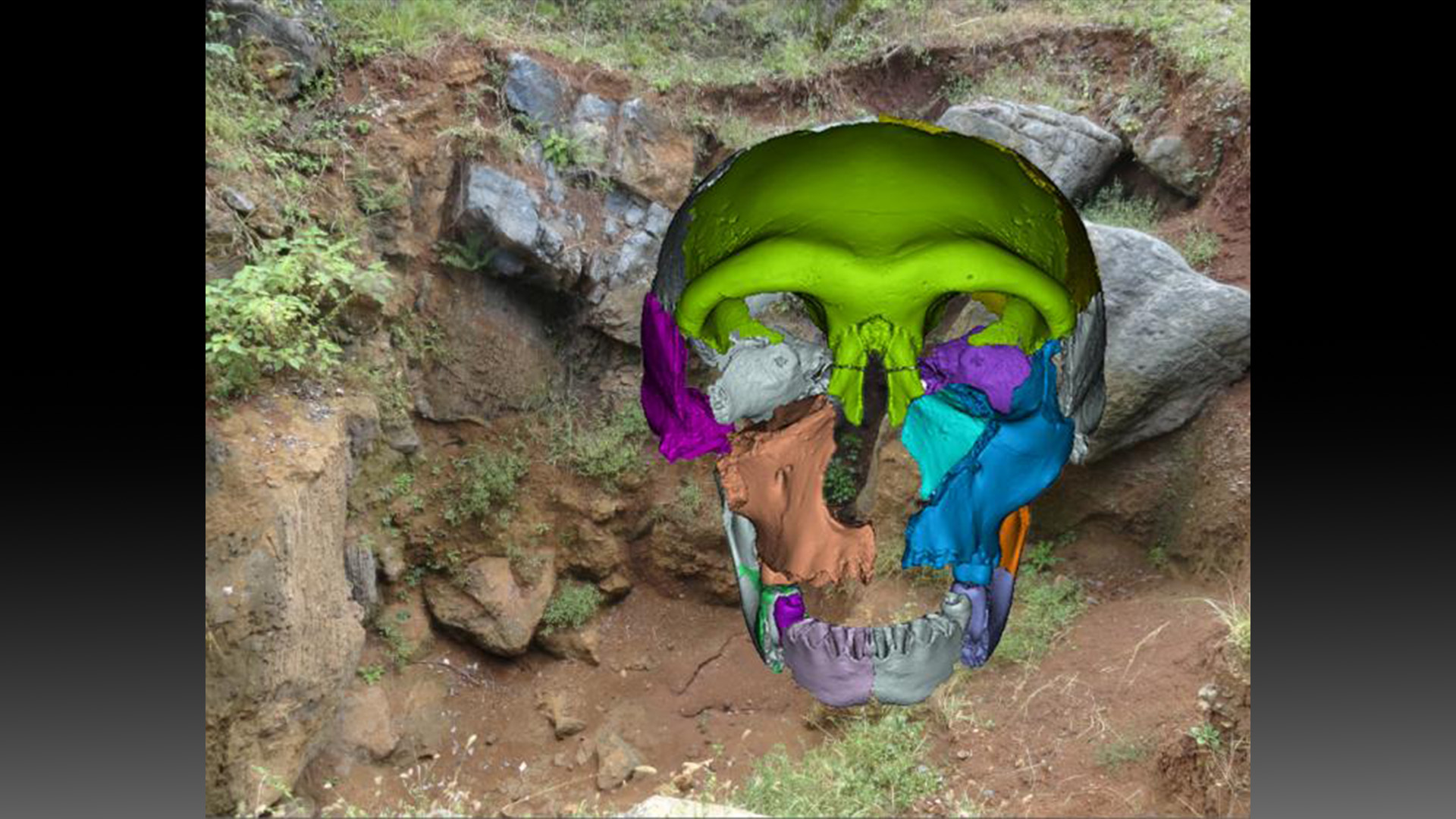
Anthropologists in China have unearthed fragments of a lower jaw that may have belonged to an unknown human lineage.
The bone, which is around 300,000 years old, belonged to a young teenager and features a unique mosaic of ancient and modern traits, according to a new study.
However, because the fossil traits are open to interpretation, it could also be related to Homo sapiens or our close human relatives, experts told Live Science. Over the last decade, researchers have found the remains of at least 16 individuals at the site of Hualongdong in east-central China, roughly 750 miles (1,200 kilometers) south of Beijing. A previous analysis of the remains showed they date to between 275,000 and 331,000 years ago, or to the late Middle Pleistocene epoch (2.6 million to 11,700 years ago) This time period is key to understanding the evolution of our own human lineage, but it's complicated by the presence of other, now-extinct branches of the human tree, such as Neanderthals and Denisovans.
Related: Some of the 1st ice age humans who ventured into Americas came from China, DNA study suggests
At Hualongdong, researchers discovered a near-complete skull they refer to as HLD 6. Initial studies in 2019 and 2021 showed that this individual, who was likely between 12 and 13 years old at death, had a modern, human-like face but a skull that looked more like the earliest Homo sapiens.
After discovering a new fragment of the mandible — the lower jaw — of HLD 6 in December 2020, researchers examined and reconstructed the bone for further analysis. They presented their findings in a research article published July 31 in the Journal of Human Evolution.
Xiujie Wu and Wu Liu of the Chinese Academy of Sciences in Beijing and colleagues took two dozen measurements of HLD 6's mandible and compared them to 83 other known fossil hominins using a technique called geometric morphometrics, which uses statistics to compare 3D shapes generated by the measurements.
HLD 6 had several features that suggest the teen had a chin — one of the hallmarks of modern humans. However, the fossil lacked some other features of chins, leading the researchers to conclude that the ancient teen did not have one.
"The HLD 6 mandible exhibits a mosaic pattern with some features commonly found in Middle Pleistocene archaic hominins, Late Pleistocene anatomically modern humans, and recent modern humans," the researchers wrote in the study.
Even though HLD 6 has modern human-like features in their facial bones, their lower jaw has a more complicated set of traits that match the diversity within the human lineage in the Middle Pleistocene. This means that the Hualongdong individuals could be related to Homo sapiens, Neanderthals, or Denisovans, or could be another lineage entirely.
Chris Stringer, research leader in human evolution at the Natural History Museum in London, who was not involved in this study, said that the skull and mandible are very interesting, but he does not think HLD 6 is closely related to Homo sapiens. "The data presented suggest a distinctive combination of features that supports the idea of a third human lineage in China, not sapiens nor Neanderthal," he told Live Science in an email.
Michael B.C. Rivera, a biological anthropologist at the University of Hong Kong who was not involved in the study, told Live Science in an email that "with few fossils available for study in previous decades, scientists could not grasp the degree of variation we now see dated to the Middle Pleistocene." This Hualongdong fossil may hint that our evolution was more gradual and nuanced than previously thought, Rivera said, and that "we are uncovering only snippets of that evolutionary history."
In order to fully understand how our human species evolved, mixed with others and moved around the world, more research needs to be done, Stringer said.
"Vast areas of Africa and southeast Asia have still not produced a single ancient bone or skull," Stringer said, "though stone tools show people were there, and the whole Indian subcontinent has only one significant ancient human fossil so far."







